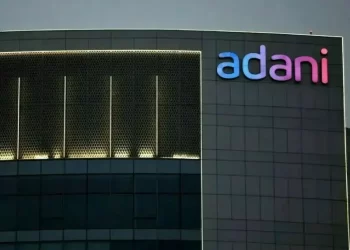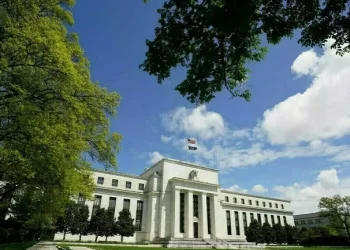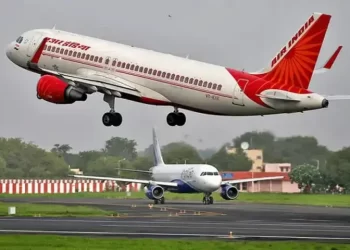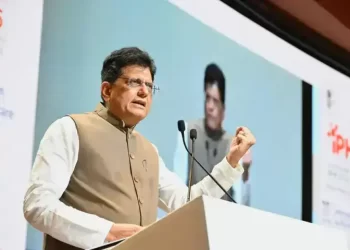IBADAN, Nigeria (news agencies) — Dimly lit and stuffy classrooms stir with life every morning as children file in. Rays of sunlight stream through wooden windows, the only source of light. Pupils squint at their books and intermittently the blackboard as teachers try to hold their attention.
It’s a reality for many schoolchildren across Nigeria, where many buildings don’t have access to the national electricity grid. In Excellent Moral School in Olodo Okin in Ibadan, “the entire community is not connected, including the school,” said school founder Muyideen Raji. It acutely affects pupils, he said, who can’t learn how to use computers or the Internet and can’t study in the evenings.
About half of Nigeria’s more than 200 million people are hooked up to a national electricity grid that can’t provide sufficient daily electricity to most of those connected. Many poor, rural communities like Olodo Okin are off the grid entirely.
In a country with abundant sunshine, many are looking to solar energy to help fill the gaps, but getting risk-averse investors to finance major solar projects that would give Nigeria enough reliable energy is an uphill struggle. It means that millions in the country are finding ways to live with little to no electricity.
Studies have shown that Nigeria could generate much more electricity than it needs from solar energy thanks to its powerful sunshine. But 14 grid-scale solar projects in the northern and central parts of the country that could generate 1,125 megawatts of electricity have stalled since contracts were signed in 2016.
Those trying to develop solar projects in the country blame interest rates for borrowing which can be as high as 15 percent, two to three times higher than in advanced economies and China, according to the International Energy Agency.
That means it’s more costly for solar companies to work in Nigeria or other developing nations than in rich countries. Africa only has one-fifth the solar power capacity of Germany, and just 2% of global clean energy investments go to the continent.
“The same project put up in Nigeria and Denmark; the Danish project will get funding for 2 to 3 percent” interest rate, said Najim Animashaun, director of Nova Power, one of the stalled solar projects. Meanwhile he struggles to get loans even with interest rates of 10 percent or higher, “even though my solar project can produce two and half times more power,” than a Danish one.
Nigeria also does not set so-called cost-reflective tariffs, meaning the price consumers pay for electricity doesn’t cover the costs to produce and distribute it. This means distribution companies can’t fully pay producers and the industry relies on government interventions to stay afloat, scaring off lenders from investing in the solar industry.
Currently, power producers say they are owed up to 3.7 trillion Naira ($2.7 billion) by the government, making it difficult to meet obligations to their lenders and contractors.
One option would be getting World Bank guarantees that would put investors at ease and make them more willing to put money into solar projects — but the government is wary of signing up to anything that would force them to pay large sums even if electricity from the projects does not get the consumers because of inadequate transmission and distribution infrastructure.
But without World Bank guarantees “nobody will develop or finance a project with a government subsidy, because it can dry off,” said Edu Okeke, the managing director of Azura Power. Azura Power has a stake in the now-stalled 100 megawatt Nova solar project in Nigeria’s northern Katsina State.
With less than 8,000 megawatts of capacity and an average supply of less than 4,000 megawatts — less than half of what Singapore supplies to just 5.6 million people — power outages are an everyday occurrence in Nigeria.
Communities like Excellent Moral School’s in Ibadan that have no access to electricity are often surrounded by more fortunate ones that are connected to the grid but experience frequent outages and have to use gasoline and diesel-run private generators.
With the long-running petroleum subsidies now removed, many households, schools, hospitals and businesses struggle with the cost of the fuel for their backup generators.
“We have stopped using a diesel generator as an alternative due to costs,” said Abdulhakeem Adedoja, the head of Lorat Nursery and Primary School in Ibadan. He added that although the school is in an Ibadan area that is connected to the grid, they could go two weeks without a power supply.
The problem is not just the lack of electricity for computer-aided learning, proper lighting, and fans to make classes less stuffy for pupils and teachers, but also that students are unable to complete their school assignments at home, Adedoja said.
For more energy-hungry small businesses like restaurants, they either close shop or continue with alternative power generation, incurring high costs that hurt their capacity for expansion.
Ebunola Akinwale, the owner of Nature’s Treat Cafe in Ibadan, said she pays 2.5 million Naira ($1,700) monthly to power backup generators in her four branches.
“If nothing changes, I probably would have to close one or two branches,” she said, though she is planning to go solar which she enthuses will help us cut “pollution from the diesel (generators).” She’s in talks with her bank for a low-cost loan package specially designed for young women entrepreneurs to finance the solar alternative.









